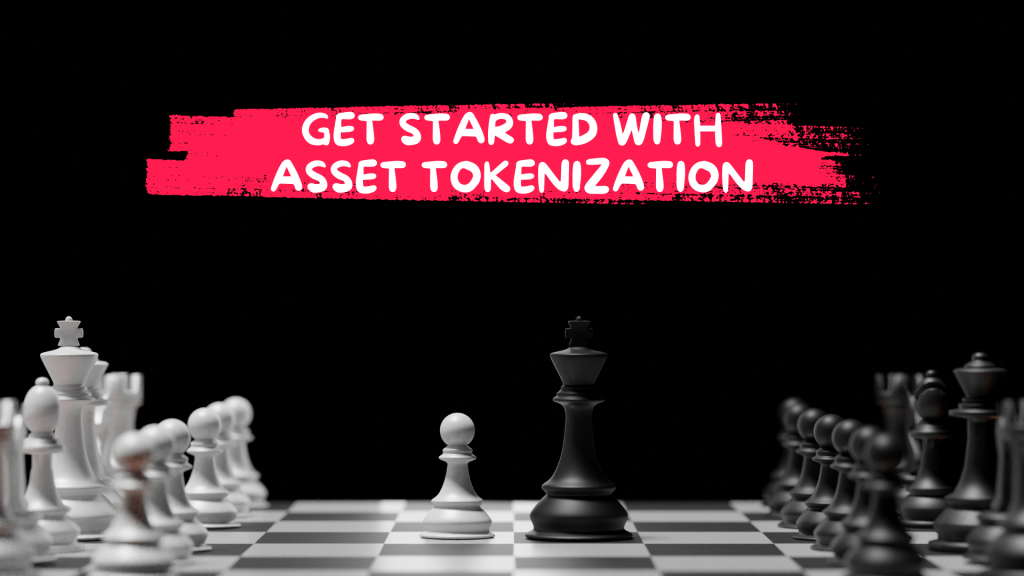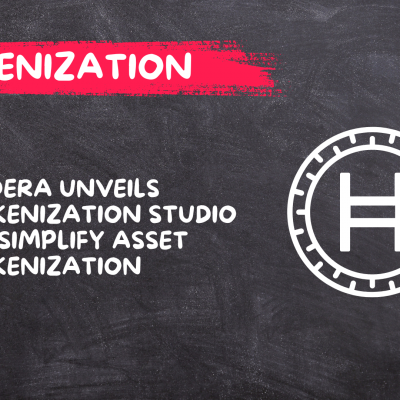In recent years, asset tokenization has emerged as a revolutionary concept, offering a more efficient, transparent, and secure way to represent real-world assets on a blockchain. Whether you’re a business looking to tokenize your assets or an individual curious about how to get involved in this emerging field, this step-by-step guide will walk you through the process of getting started with asset tokenization.

What is Asset Tokenization?
At its core, asset tokenization involves converting ownership rights of an asset into digital tokens. These tokens are then stored and traded on a blockchain. The assets can range from physical items such as real estate, commodities, and artwork, to intangible assets like intellectual property, financial securities, or even a share in a revenue stream. The promise of tokenization lies in its ability to enhance liquidity, reduce barriers to entry, and simplify the transfer of ownership.
In this comprehensive guide, we will cover all the key steps you need to take to successfully tokenize assets. Let’s dive in.
Step 1: Understand the Concept and Benefits of Asset Tokenization
Before delving into the technicalities of tokenization, it’s important to thoroughly understand the concept and its benefits.
What is Blockchain Technology and Why It Matters for Tokenization?
Tokenization relies on blockchain technology, a decentralized and secure ledger system that records transactions. By representing an asset on the blockchain, you’re creating a unique, traceable digital counterpart of that asset. Blockchain provides advantages such as immutability, transparency, and reduced costs by removing intermediaries in transactions.
Key Benefits of Tokenization:
- Fractional Ownership: Tokenization allows for dividing an asset into smaller units, enabling multiple owners to share in the investment.
- Increased Liquidity: Traditional illiquid assets (e.g., real estate, artwork) can be bought and sold more easily by converting them into tradable tokens.
- Security and Transparency: Blockchain’s decentralized nature ensures secure transactions, and all token movements are transparent and traceable.
- Global Reach: Tokens can be traded across borders, opening up investment opportunities to a global market.
Step 2: Choose the Asset You Want to Tokenize
The first critical step in the tokenization process is selecting the right asset to tokenize. Consider both tangible and intangible assets that are either high in value or would benefit from enhanced liquidity and tradability.
Common Types of Assets Suitable for Tokenization:
- Real Estate: Properties, both residential and commercial, are highly popular assets for tokenization.
- Art and Collectibles: Artwork, vintage cars, or rare collectibles are also gaining traction in the tokenization market.
- Commodities: Assets like gold, silver, and oil can be tokenized, allowing easier access to commodity investments.
- Financial Instruments: Securities like bonds, shares, and derivatives can be tokenized to improve access to capital markets.
- Intellectual Property: Patents, royalties, and revenue streams from copyrights or music rights can be represented as digital tokens.
Questions to Ask Before Choosing an Asset:
- Does the asset have a clear and verifiable value?
- What is the current liquidity level of the asset? Would tokenization improve this?
- Is there demand for fractional ownership in this type of asset?
- Does the legal framework support the tokenization of this asset?
Step 3: Select the Appropriate Blockchain Platform
Choosing the right blockchain platform for tokenization is critical. There are multiple blockchains that support the creation and trading of digital tokens, but each offers different features, cost structures, and capabilities.
Popular Blockchain Platforms for Tokenization:
- Ethereum: Ethereum is one of the most widely used platforms for tokenization. It offers flexibility through its smart contract capabilities, and its ERC-20 and ERC-721 standards are the most popular for asset tokenization.
- Binance Smart Chain (BSC): BSC offers lower transaction fees and faster processing times than Ethereum, making it an appealing choice for asset tokenization.
- Tezos: Known for its focus on security and governance, Tezos is emerging as a strong platform for tokenizing assets.
- Polkadot: With its interoperability feature, Polkadot allows different blockchains to communicate, making it a versatile option for tokenization projects.
- Hyperledger Fabric: For enterprises that need a private or permissioned blockchain, Hyperledger Fabric provides a secure and flexible environment for tokenizing assets.
Key Factors to Consider When Choosing a Blockchain:
- Transaction Costs: Some blockchains, like Ethereum, have high gas fees, which could affect the cost-efficiency of your tokenization.
- Transaction Speed: Faster blockchains like BSC may be better suited for assets that require frequent trades or high liquidity.
- Smart Contract Support: Ensure the blockchain you choose supports smart contracts, as these will handle the automated aspects of the tokenization process.
- Security: Given that you’re tokenizing valuable assets, security should be a top priority. Look into the blockchain’s history of security breaches or vulnerabilities.
- Scalability: If your tokenization project involves high transaction volumes, you’ll need a blockchain that can scale to meet demand.
Step 4: Develop or Choose a Tokenization Framework
After selecting the blockchain, the next step is to create or choose a tokenization framework. This framework outlines how the tokens will be structured, governed, and traded.
Token Standards:
- ERC-20 (Ethereum): This standard is used for fungible tokens, meaning each token is identical and can be exchanged for another of equal value. It’s ideal for assets like shares or commodities.
- ERC-721 (Ethereum): This standard is used for non-fungible tokens (NFTs), where each token is unique. This is suitable for tokenizing collectibles, artwork, or unique pieces of real estate.
- BEP-20 (Binance Smart Chain): Similar to ERC-20, this standard offers compatibility with the Binance Smart Chain, enabling the tokenization of fungible assets with lower transaction fees.
Building Your Own Smart Contract:
To tokenize your asset, you will either need to develop a smart contract or use pre-built tokenization platforms. If you’re creating your own, you will need a blockchain developer who understands smart contracts and the security risks involved.
Key Features Your Tokenization Framework Should Have:
- Ownership Management: The smart contract should clearly define and enforce ownership rights.
- Transferability: Ensure the tokens are easily transferable between parties while adhering to legal requirements.
- Divisibility: Depending on the asset, you may want to allow for fractional ownership.
- Compliance: Make sure the tokens comply with relevant regulatory frameworks, especially if they represent securities.
Step 5: Legal and Regulatory Considerations
Tokenizing an asset isn’t just a technical challenge; it’s also a legal one. Before launching your tokenized asset, you need to ensure that you’re compliant with all relevant regulations in the jurisdictions where you intend to operate.
Key Legal Aspects to Consider:
- Securities Laws: In many countries, tokenized assets can be considered securities, meaning they must adhere to strict financial regulations. You may need to register your tokens with a regulatory body like the SEC (in the U.S.) or its equivalent in other countries.
- KYC/AML Requirements: Know Your Customer (KYC) and Anti-Money Laundering (AML) procedures may need to be integrated into your tokenization process. Ensure your platform supports these regulatory requirements to avoid legal repercussions.
- Intellectual Property Rights: If you’re tokenizing an intellectual asset, such as music royalties or patents, ensure that ownership rights are clearly defined and protected.
- Tax Implications: Tokenized assets may be subject to different tax rules, so it’s crucial to understand your obligations and factor these into your strategy.
Step 6: Issue and Manage Your Tokens
Once the legal framework is in place, you can proceed to issue your tokens. This involves creating the tokens on your chosen blockchain and distributing them to your investors or participants.
Token Distribution Options:
- Initial Coin Offering (ICO): Although less popular due to regulatory crackdowns, ICOs allow for the initial sale of tokens to investors.
- Security Token Offering (STO): This is a regulated version of the ICO, where the tokens represent a real-world asset and are compliant with securities laws.
- Private Sale: You can privately sell tokens to a select group of investors.
- Crowdfunding Platforms: Platforms like Kickstarter or Indiegogo could be used to distribute tokens in exchange for investments.
Managing Token Ownership:
Once issued, you will need a robust system to manage token ownership, transfers, and compliance. A digital wallet is essential for both you and your investors to hold and transfer tokens securely.
Step 7: Engage with a Tokenization Platform (Optional)
If developing a tokenization framework sounds too complicated, several platforms offer a more user-friendly solution for tokenizing assets. These platforms handle the technical, legal, and compliance aspects, allowing you to focus on managing your asset.
Popular Tokenization Platforms:
- Polymath: Specializes in the tokenization of securities and offers compliance solutions.
- Tokeny Solutions: A platform designed for the tokenization of assets, offering a range of tools for compliant issuance and management.
- Securitize: Focuses on digitizing private securities and provides a regulatory framework.
- tZERO: Offers a blockchain-based marketplace for trading tokenized securities.
Step 8: Create a Marketplace for Trading Your Tokens
Once your tokens have been issued, you need a marketplace where they can be bought, sold, or traded. While some tokens are tradable on decentralized exchanges (DEX), others require listing on specialized platforms.
Options for Token Trading:
- Decentralized Exchanges (DEX): Platforms like Uniswap or PancakeSwap allow for peer-to-peer trading without intermediaries.
- Centralized Exchanges: Major exchanges like Binance or Coinbase also offer token trading but usually have stricter listing requirements.
- OTC (Over-the-Counter): For larger, institutional investors, an OTC trading desk may provide a better fit, allowing for more privacy and larger trades.
- Private Marketplaces: You can create a custom marketplace for trading your tokens, especially if you want to maintain more control over the transactions.
Step 9: Ongoing Management and Compliance
Tokenization is not a one-time process. Once your tokens are issued, you need to maintain proper compliance, ensure liquidity, and manage investor relations.
Key Aspects of Ongoing Management:
- Regulatory Updates: Stay informed of changes in tokenization and securities laws.
- Token Holder Communication: Regularly communicate with your token holders, updating them on the status of the underlying asset.
- Liquidity Management: Ensure that your tokens remain liquid by listing them on appropriate exchanges and maintaining market demand.
- Security: Continuously monitor and update the security of your tokens and the smart contracts to prevent hacks or fraud.
Getting started with asset tokenization requires a thorough understanding of blockchain technology, legal frameworks, and the specific needs of your chosen asset. By following this step-by-step guide, you can navigate the complexities of the tokenization process and unlock new opportunities for enhancing liquidity, security, and global reach for your assets. As the tokenization industry evolves, staying updated with new technologies and regulations will be key to ensuring the success of your tokenization project.
With the right strategy and preparation, tokenizing your assets can be a transformative move, opening up new investment opportunities in a rapidly digitalizing world.


